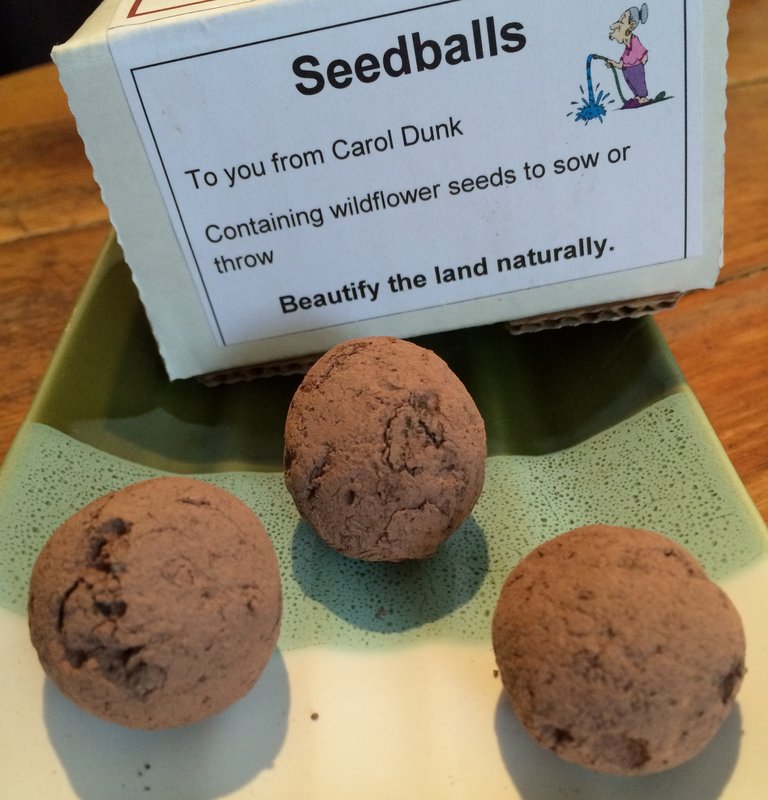Back to January 2016 Newsletter
Seed Bombs for Pollinators

Kim Fellows
Josie Jeffery, who writes a wonderful article about seed bombs (also called seed balls) in The Ecologist, says: "Here you have in the palm of your hand a little revolution, something that can change the face of the earth, something that contains the early stages of a field of wild flowers, edible crops or a herb garden."
The seed ball's popularity is commonly ascribed to Masanobu Fukuoka, who revived the ancient Japanese practice of "Tsuchi Dango" (“earth dumplings” in Japanese!) in 1938, as part of his own agricultural practice. This revival provided the inspiration for several projects across the globe, many spearheaded by Fukuoka himself before he died in 2008.
More recently, seed bombs have become popular in urban environments, in efforts to bring nature, food and splashes of colour to neglected corners of cities. People feel called to action to help protect pollinators and other insects that rely on wildflowers and food plants for their nourishment and habitat, and this is one way to do just that. Josie reminds us of the importance of “sensible seed bombing”, or launching seed bombs in environments where they will flourish.
Curiously, I find myself drawn to resources from the same two wonderful women I cited in last month's bulletin, Carol Dunk and Suzanne Hanna. Carol makes her seed balls with compost, red clay, chili powder and the seeds of pollinator plants. Suzanne recommends including fish compost, and using the seeds of sun-loving plants that grow well with little water. Here are some species she suggests: sunflowers, cosmos, purple sage, forget-me-nots, asters, morning glories (great for chain link fences), poppies, marigolds, succulents, herbs, onions, nasturtiums, coneflowers, Black Eyed Susans, sweet peas, hollyhocks, kale, chard, lovage, sorrel, rhubarb, hyssop, fleabane, fava beans, clover, lupines, cherry tomatoes, milkweed, Shasta daisies, Nigella, and Nicotiana.
Are you snowbound? Do you have children in your life or in your neighbourhood? If so, I encourage you to invite them to join you in making seed balls this winter – and have fun with them as you bomb them around together. This is a fun activity even in January, for native wildflower seed will benefit from the cold dormancy (vernal stratification), and are a lovely surprise when they bloom in the spring.
**
Kim Fellows is the outreach coordinator of Pollination Canada.
Find out more:
What is a seedball? by Josie Jeffery. The Ecologist.
Seed Balls and Seed Bombing by Carol Dunk. (Scroll down her homepage to the links she provides.)
Worldwide Restoration Projects Using Seedballs.
Not yet a member?
An annual membership to Seeds of Diversity gives you access to our seed exchange, seed grow-out programs, and our online news.

We depend on donations to do our work.

Thank you for your support!
